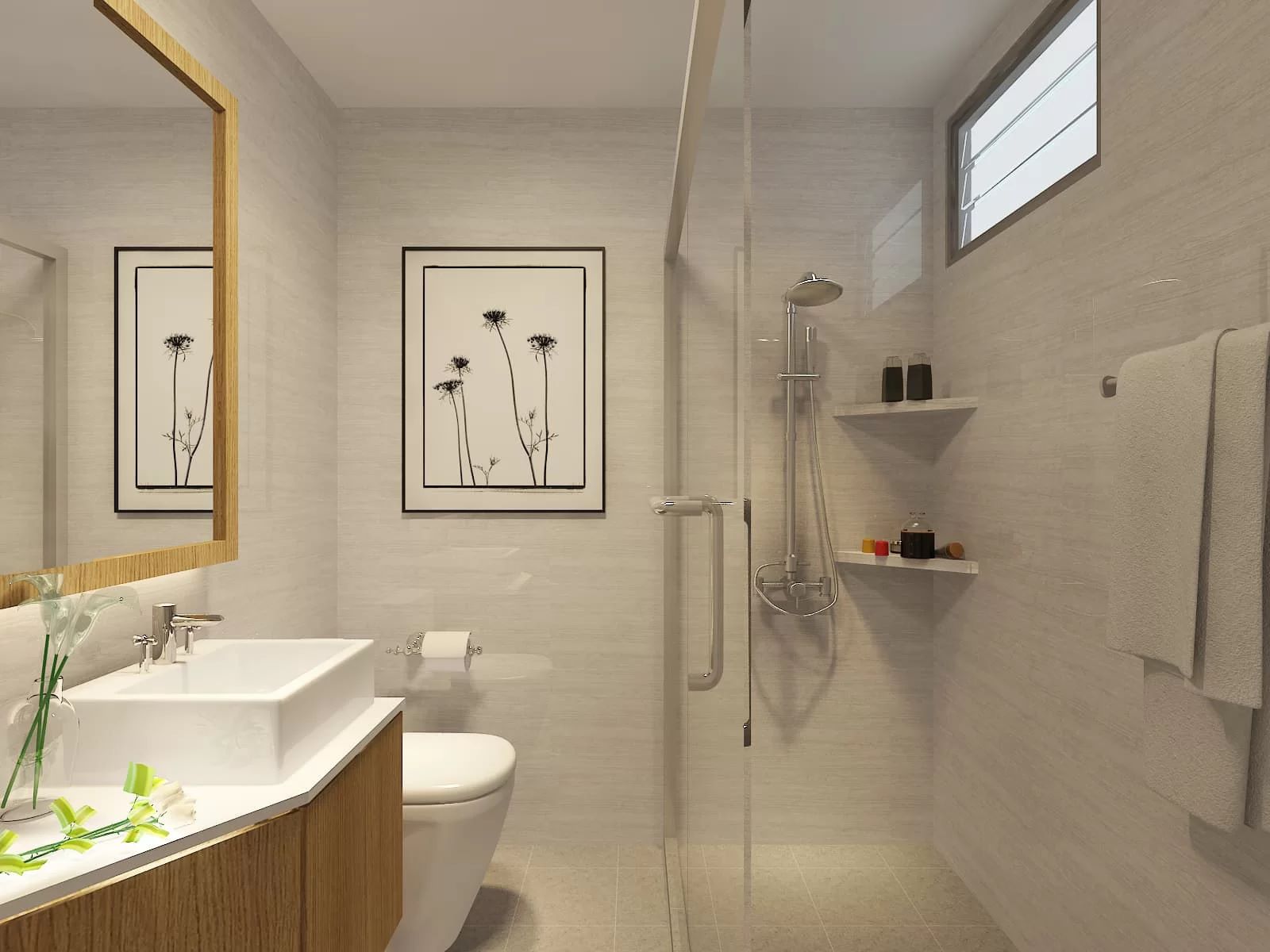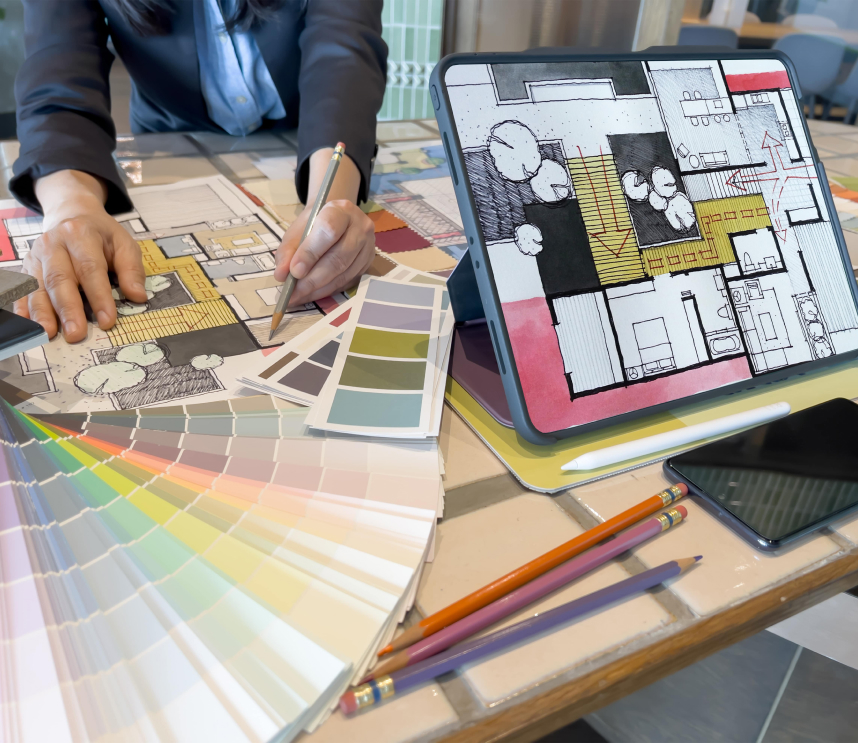Your cart is currently empty!
Senior-Friendly Home Makeover Guide
Published
Categories


As our loved ones age, it also becomes increasingly important to ensure their safety, comfort, and well-being. This means adapting your home to accommodate the distinct needs of elderly family members. Whether you’re preparing for the future or already have seniors living with you, modifying your home to cater to elderly needs is a meaningful way to show your care and support
We will guide you through the essential aspects of renovating your home to make it elderly-friendly.
Essential Home Modifications for Seniors
There are simple adjustments you can make, and even complex modifications to make your home safe and comfortable for the elderlies in the house.
Bathroom
- Grab bars help seniors by providing support and stability. To reduce the risk of falls, install grab bars near the toilet, in the shower, and along the walls of the bathroom.
- Installing a higher toilet seat or a toilet with a built-in bidet offers easier access and improved hygiene at home.
- You can replace the traditional shower with a walk-in shower or a shower with a low threshold. For more comfort and safety, you may want to install a handheld showerhead and a shower bench.
- Make sure that the bathroom is well-lit. If you want convenience, install motion-activated lights or night lights.
- Replace slippery tiles with non-slip flooring or add non-slip mats to the bathroom.
Adjust the height of the sink and countertops to make them more accessible for seniors who may have difficulty bending or reaching.
HDB Subsidies for Elderly-friendly Home Renovations

The Housing and Development Board (HDB) in Singapore offers the Enhancement for Active Seniors (EASE) program. This program provides subsidies for home renovations for the elderly. It covers up to 95% of the cost of these improvements, but it depends on the flat type and the resident’s age.
The following items relevant to bathroom renovations are covered under EASE:
- 8 or 10 pcs of grab bars (8 for combined toilet/bathroom and 10 for separate toilet/bathroom) and 6 pcs of grab bars if the flat has a minimum of 2 toilets/bathrooms
- Up to two (2) slip-resistant treatments to existing flooring if that flat has 2 or more toilets/bathrooms
- Lowering of toilet/bathroom entrance kerbs
- 1 piece of wall-mounted foldable shower seat
- Maximum of five (5) ramps for single-step or a max. of four (4) ramps and one (1) ramp/wheelchair lifter for multi-step
- Widening of toilet/bathroom entrance
- Maximum of 2 pieces bidet spray next to pedestal pan
To be eligible, the household owner must be a Singapore citizen, and at least one member is either:
- 65 years old and above, or
- 60-64 years old who need assistance with at least one ADL (self-care activities like bathing, dressing, mobility, feeding, etc.)
Please note that these subsidies are subject to change, so it is best to check the HDB website for updates.
Kitchens
Here are some modifications you can make in your kitchen to make home renovation work more elderly-friendly.
- Like in the bathrooms, you may also want to lower countertops to a more comfortable height. You can achieve this by installing adjustable countertops or by creating a dedicated lower counter space.
- Use single-lever faucets, as they are easier to operate than two-handle ones. To achieve more versatility, select faucets with pull-down or pull-out sprayers to better control water flow and fill pots/clean the sink more easily.
- Install task lighting under cabinets and over workspaces to improve visibility.
- Remove deep, hard-to-reach shelves and replace them with pull-out shelves and drawers.
- Choose lever-style handles over knob-style ones because they are easier to grip and operate for seniors with arthritis or reduced hand strength.
- Remove obstacles and tripping hazards and make sure that there is more than enough floor space for navigation, especially if you have a senior in a walker or wheelchair.
- You may also use non-slip flooring materials and non-slip mats in areas of the kitchen that are prone to slips and falls.
- Choose cooking appliances with automatic shut-off features and easy-to-use controls. You may consider using induction cooktops as they are a safer alternative to traditional gas or electric stoves.
Install a lower countertop or table to serve as a comfy seated work area for preparing meals and doing other kitchen tasks.
Flooring
Making the hard floors safe is probably one of the highlights of home renovation for elderly people.
- If possible, replace your flooring material with one that offers good traction. Avoid highly polished or glossy surfaces, such as polished marble or ceramic tiles.
- But if you prefer tiles or hardwood flooring, you can apply non-slip treatments or coatings to improve traction.
- Place slip-resistant mats or rugs in areas prone to wetness, such as bathrooms, kitchens, and entryways.
- Use transition strips to minimise the height difference between different flooring materials and create a smooth, gradual change from one flooring type to another.
- Choose low-pile carpet options and secure them firmly to the subfloor, as thick/plush carpets can be a tripping hazard.
- Make sure that all areas of the home have enough lighting.
- Clear the walkways by removing obstacles and clutter from the floors.
Entrances and Hallways
When you make your entrances and hallways senior-friendly, three factors are considered: safety, accessibility, and ease of navigation. Master the following tips, and your elderly family members will later thank you.
- Make sure that doorways and hallways are wide enough to accommodate mobility aids like wheelchairs. A maximum width of 900 mm is ideal.
- You should also ensure that there is enough lighting in entrances and hallways. Position the light switches where they are easy to reach. The EASE program subsidises a set of 12 rocker switches if your flat has small lighting switches.
- Get rid of potential tripping hazards. Examples are high thresholds, loose rugs, and electric cords.
- Place sturdy handrails along hallways and entrances. The program also offers one handrail for the main entrance with step(s).
- If a senior in the household has a visual impairment, use contrasting colours to differentiate between the walls, floors, and doors.
- Arrange furniture and decorations so that there is a clear line of sight from one end of the hallway to the other.
- If the entrance has steps, consider installing a ramp or platform lift. The EASE program may also offer a portable ramp if your flat has a multiple-step main entrance. Wheelchair lifter is only offered if ramps are not feasible.
Additional Considerations
Furniture
- Choose sturdy and stable furniture with rounded edges.
- Select chairs and sofas with firm cushions and high backs for easier seating-to-standing positions.
- Use furniture with contrasting colours on the walls and floors.
Smart Home Solutions
- Install smart home devices like voice-activated assistants to help seniors control lights, thermostats, and other appliances hands-free.
- Use smart doorbells with video cameras to help seniors see and communicate with visitors without having to move to the door.
- Consider smart medication dispensers that remind seniors to take their medications on time and in the correct doses.
- Implement smart sensors that can detect falls or unusual activity patterns and alert family members or caregivers.
Medical Alert Devices
- Invest in wearable medical alert devices so seniors can call for help with just a button press during emergencies.
- Consider a device with GPS tracking capabilities, especially for the elderly with dementia who may wander.
Finding the Right Interior Designer for your Elderly-friendly Home Renovation

Consider taking the following steps when you are looking for an interior designer in Singapore for your home renovation.
- Search for interior design companies in Singapore that specialise in age-friendly or universal design.
- Ask for referrals from friends, family, and even your doctor who have experience with age-friendly home renovations.
- Check the credentials and portfolios of potential interior designers.
- Look for designers who are familiar with the guidelines for barrier-free accessibility in homes set by the Building and Construction Authority (BCA) of Singapore.
- Set up consultations with a few shortlisted interior designers to discuss your specific requirements and budget. Make sure that they understand the needs of the elderly in your household.
- Ask about the designer’s knowledge of assistive technologies, accessible fixtures, and age-friendly materials that can be integrated into the renovation.
- Ascertain that your chosen interior designer is willing to work closely with you and any healthcare provider in charge of the care of elderly family members.
Style+Space Offers Home Renovation for the Elderly
Doing home renovations for the welfare and safety of the elderly in your household is really a wise investment. When you are planning your renovation project, take advantage of an HDB resale renovation package promotion (if there’s any) to maximise our budget.
Remember, you must understand the needs of your loved ones. And from there, work with experience professionals to translate your concerns and visions to life.If you feel you’re ready to start this project, Style+Space is just a few clicks away. We’ll have answers to any of your questions, be it the HDB resale renovation cost or what our package promotion entails.
